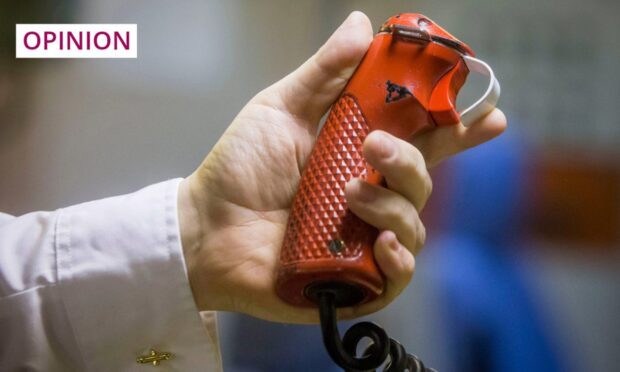Because the message is my mainstay and not the manifesto, I leave the politics to others – particularly when the subject for discussion is Trident.
I write in the wake of a second consecutive failure of a Trident missile test launch, which represents a cringingly embarrassing moment for the Royal Navy and the UK Government.
Whether this minute country, out in the ocean on the north-west periphery of Europe and out of the EU, with an ever decreasing military, needs a nuclear defence capability is a debate for those with an axe to grind. My axe hovers over the whetstone of the response and the reputation and how they are perceived by those who pay for them.
It was not a good day at the office for those on board HMS Vanguard, based with her three sister ships at Faslane, when the duff unarmed missile, costing £17 million, plopped into the oggin not far from her after the failed launch. To add heat to the riddy, sitting in the control room of the submarine, off the coast of Florida, was Secretary of State for Defence Grant Shapps and the head of the Royal Navy, Admiral Sir Ben Key.
I would hope, given the billions we pay for it (how many potholes could be filled, NHS waiting lists cleared and schools built for what Trident costs?), that the very least we can expect is that it works. And that was a key message not delivered by the MOD, which said that the failure was “event specific”. Well, what kind of message is that? What else would it be?
The MOD and the Royal Navy endlessly describe Trident as a deterrent. Deterrent is a pejorative word to many people – it is an opinion and not a fact. This trope is tiresome; it’s not much of a deterrent if it doesn’t work.
Nowadays, Armageddon is corporeal
We’ve had nuclear weapons, for better or worse, since they were invented during World War Two. We knew our enemies had them, too. And if we all had them, then there was little chance of them being used, because everyone knew there would be nothing left for the winner.
I suppose there was an element of deterrence, then, but that was during the dark days of the Cold War, and based on the premise that ours worked. Since then, it has been an 80-year, multi-billion-pound stand-off, while we all waited for Godot.
During the Cold War, Armageddon was an existential threat. Now, in this troubled world, it’s corporeal.
And, given that there is a Götterdämmerung on the horizon, with two ghastly politicians holding the strings, I’m surprised that a usually rapacious media has not latched on to this with more vigour. What happened on Vanguard seems to have passed with little comment, far less scrutiny, with a general election on the horizon and wars in Europe and the Middle East ongoing.
Is our nuclear threat really a threat at all?
Back in the day, when I was a jobbing journalist, I sought, and surprisingly was given, access to HMS Vanguard while she was at sea. The crew were all deeply suspicious of me, but the officers made me feel very welcome, and I have to say I enjoyed the experience immensely.
Nothing was off limits and, as we slid silently under the Atlantic, we were permitted to film wherever we wanted. They even stunted a launch drill for us, where an officer walks through the vessel holding a piece of paper aloft containing the coded message from the prime minister to fire. Nearby stands a burly sailor holding a large truncheon, to dissuade anyone who has a sudden change of mind about ending the world.
The remaining nuclear weapons in the Nato arsenal belong to France and the UK. But, as ours don’t seem to work, we might as well leave the job to the French
More chilling than that, even, was the captain’s acquiescence to my request to hold the nuclear trigger, bizarrely based on the design of a Colt Peacemaker pistol and alarmingly like a Scalextric handset.
That was 25 years ago, and we now live in a much less stable world, with Vladimir Putin’s invasion of Ukraine, and a Donald Trump election win in the post. If Trump withdraws the colossal US military from Nato, as he has threatened to do, stops funding Ukraine, as he has threatened to do, and gives his friend Vlad the green light to invade any Nato country, as he has already done, where are we then?
Here’s where. Ukraine falls and Russia heads west. Nato retaliates, but without the US it is toothless. The remaining nuclear weapons in the Nato arsenal belong to France and the UK. But, as ours don’t seem to work, we might as well leave the job to the French.
When I held that nuclear trigger, happily the cable connecting it to the rest of the system dangled impotently at my feet. I wonder if it would have worked had it been plugged in.
Mike Edwards OBE was the face of the evening news on STV for more than 25 years and is a published author, a charity trustee and a serving Army Reservist



Conversation